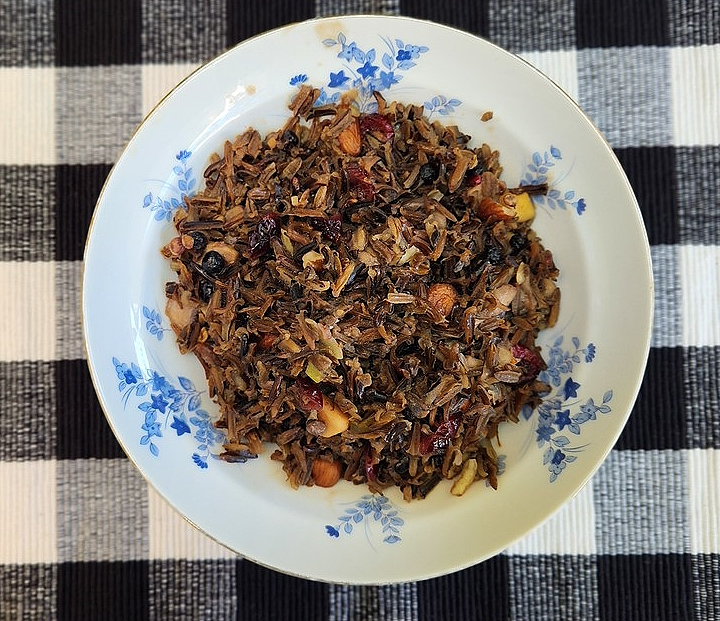
The Dornob Collective
Persian music is a generally non-rhythmic music with each instrument using a single melodic line known as monophony. Both instruments and a singer are used to create the traditional sound of Persian/Iranian music. The tempo is usually fast and the ornamentation of instruments is dense. The vocals of the singer usually have a yodel-like quality known as Tahrir.
The history of Persian music is somewhat mysterious because notation in Persia was not used with significant regularity until the 1930s. Most information about early Persian music is found in documentation from artists, historians, and philosophers. According to these sources Jamshid, an Achemenid King, is credited with creating Persian music around the 6th to the 4th century B.C.E. The music was used in courts and for religious rituals. During the Sassanian Dynasty, between the 3rd and the 7th century C.E., musicians were given exalted status because of their connection with the courts' activities. During this period Barbod, a famous court musician, created a musical system known as Dastgah, which Iran's modern musicians still use in their compositions.
Barbod’s system consisted of seven royal modes, 30 derivative modes, and 360 melodies. The new system created 12 dastgahs, each with a designated eight-note scale, and 365 melodies (gushes), which are only four or five notes long and create a foundation on which the musician can make changes or improvise. Each melody flows effortlessly to the next with the use of transition fragments called foruds. Finally, the combination of all pieces that make up the repertory of Persian music is called the radif (row). Thus, the radif of Persian music contains the 12 dastgahs with all of their constituent gushehs. An accomplished musician knows all the 12 dastgahs and corresponding gushes and foruds. The musician has the ability to improvise them, changing the rhythm and melody just enough to sound different while not changing the original melody.
After the Sassanian Dynasty came the Iranian Period, from the 7th to the 15th century, which suppressed music and any musical activities. After this suppression came the renaissance of culture in Persia, between the 16th and the 18th century, when the Safavid Dynasty came into power, but even though the Persian culture was flourishing, music was being suppressed during this time due to the Shia Islam outlook on music as a corrupting, frivolous activity. When the Qajar Dynasty was in power from 1785 to 1925, great improvements were made to Persian music, including the establishment of the dastgah system, which is used today in Iranian music. In 1935 Persia's country name was officially changed to Iran. During the Pahlavsi Dynasty from 1925 until 1979, music in Iran was restored as an important part of Iranian culture and one to be held in esteem. Since then, traditional Persian music has attracted a lot of attention and interest.
In modern Iran, traditional Persian music is rooted in religion and played in many different types of ceremonies. Traditional Persian music has connections with Sufism, a sect of Islam, and is considered a way of having a religious connection with the divine spirit. Sufis believe that their music invokes the word of God. Western pop has also influenced the music of Iran and is played anywhere that music is enjoyed.
Persian Instruments:
Tar - A stringed lute instrument that has two octaves. Five of the strings are steel and one is brass. It is plucked to produce sound and is tuned according to what Dastgah is being played.
Setar - A stringed lute that has the same two octave range as a Tar, but with only four strings.
Kamancheh - A bowed spike fiddle that has four metal strings. It is played much like a violincello but sounds much like a violin. It is tuned differently depending where in the country it is being played.
Santoor - A dulcimer instrument that is played with two delicate wooden mallets, with a range of three octaves. It has 72 strings that are arranged in sets of four, and each string within the sets are tuned to the same pitch.
Barbat - A plucked string instrument with nine to eleven strings.
Tanbour - A plucked string instrument with a pear-shaped body and three strings.
Ney - A wind instrument similar to the flute with six finger holes.
Tombak (or Zarb)—A one-headed drum that is carved from a single piece of wood. Its circumference is smaller on the bottom and is open, while the top is larger and has a sheepskin membrane stretched across it.
Daf - A frame drum covered in goat skin
Dayereh - A tambourine.
Western instruments such as the violin, piano, accordion, violincello, clarinet, and trumpet are also used in modern Persian music. A "singer" is also usually present and reciting Sufi poetry which sometimes sets the rhythm for the piece.









